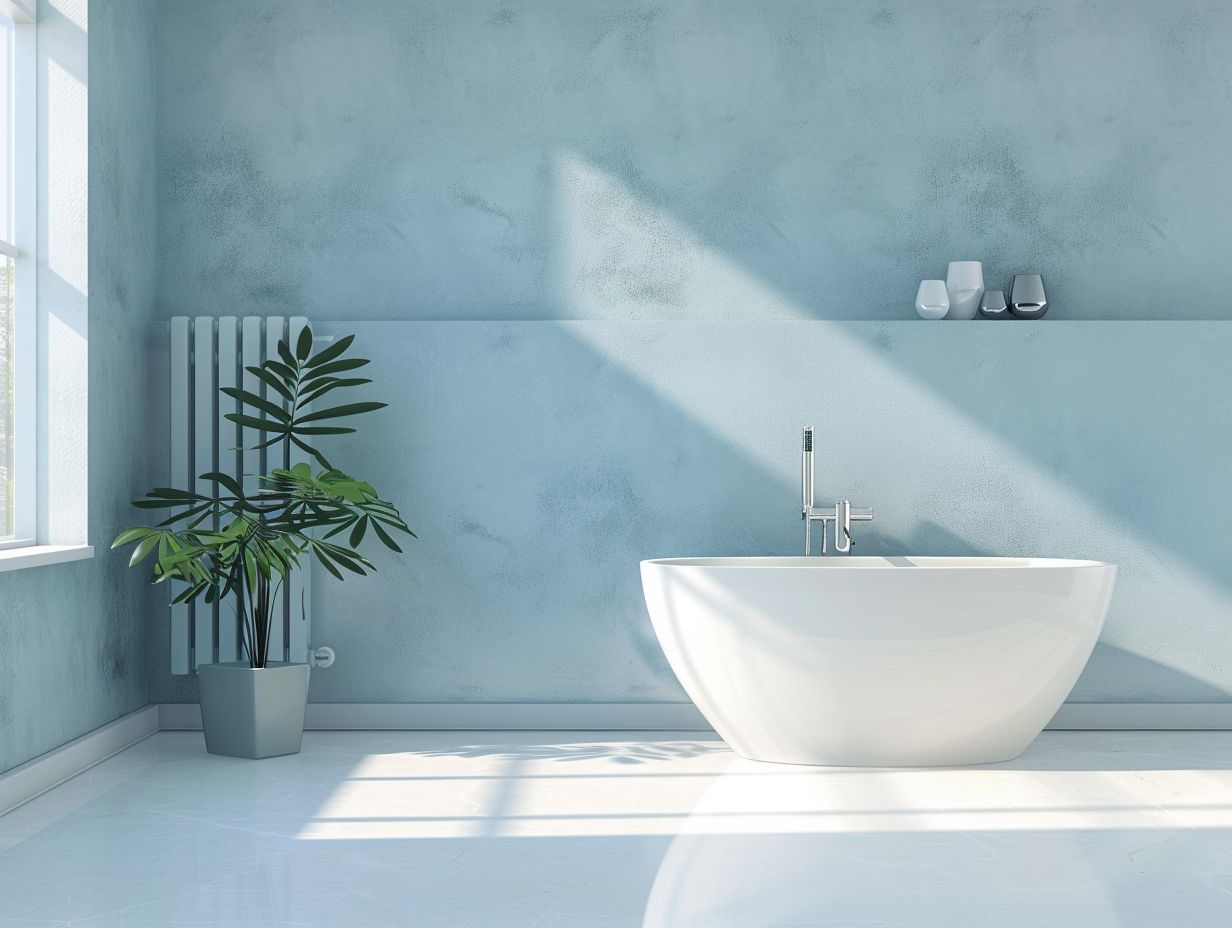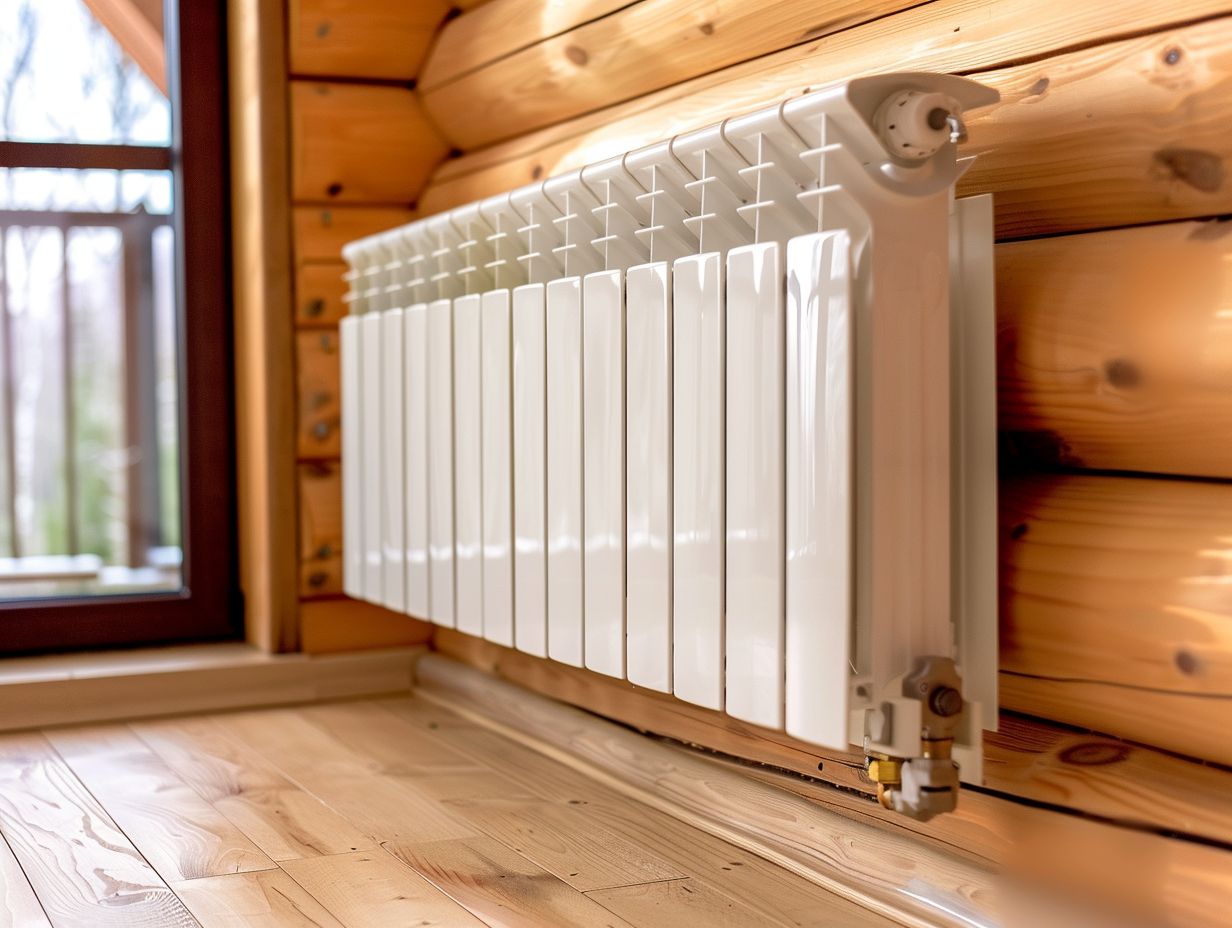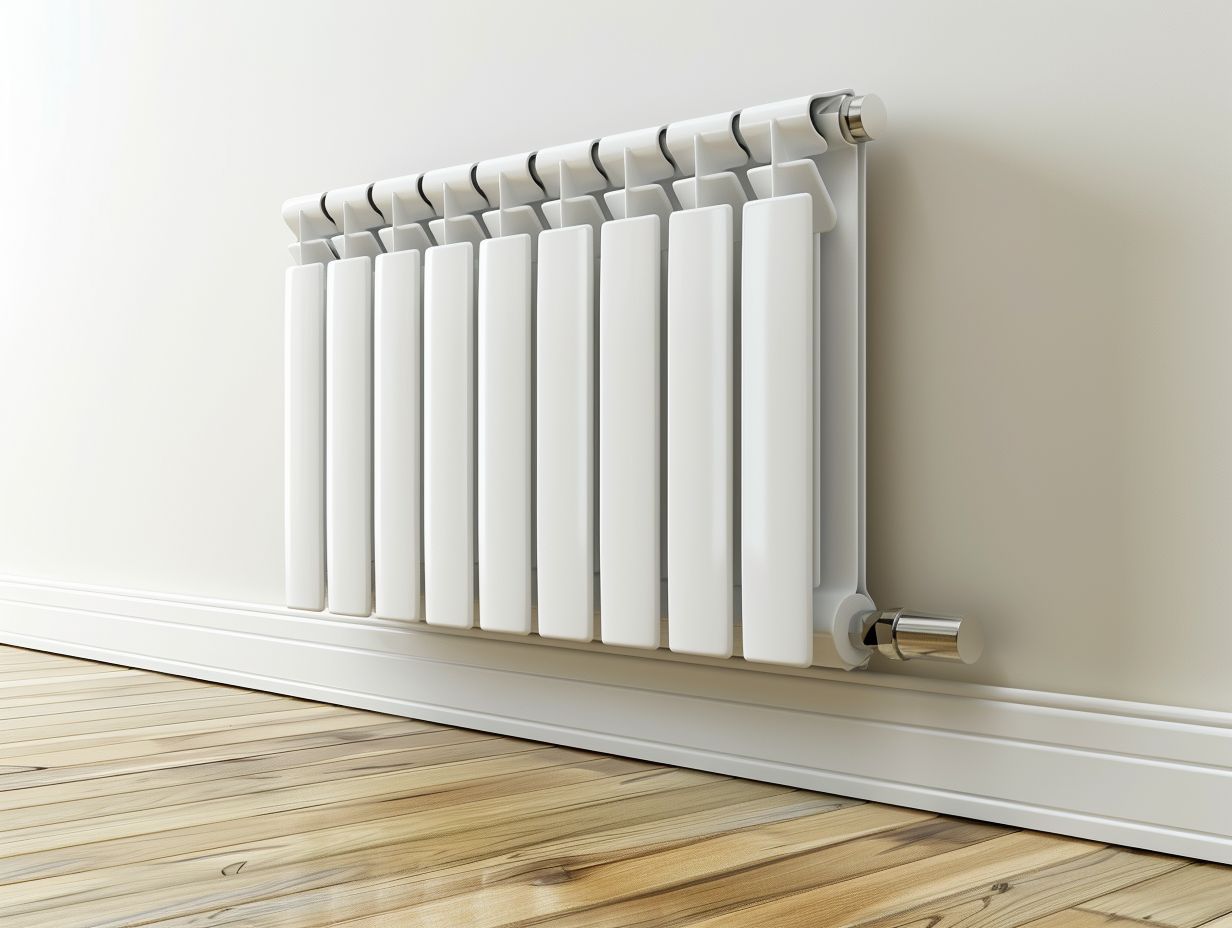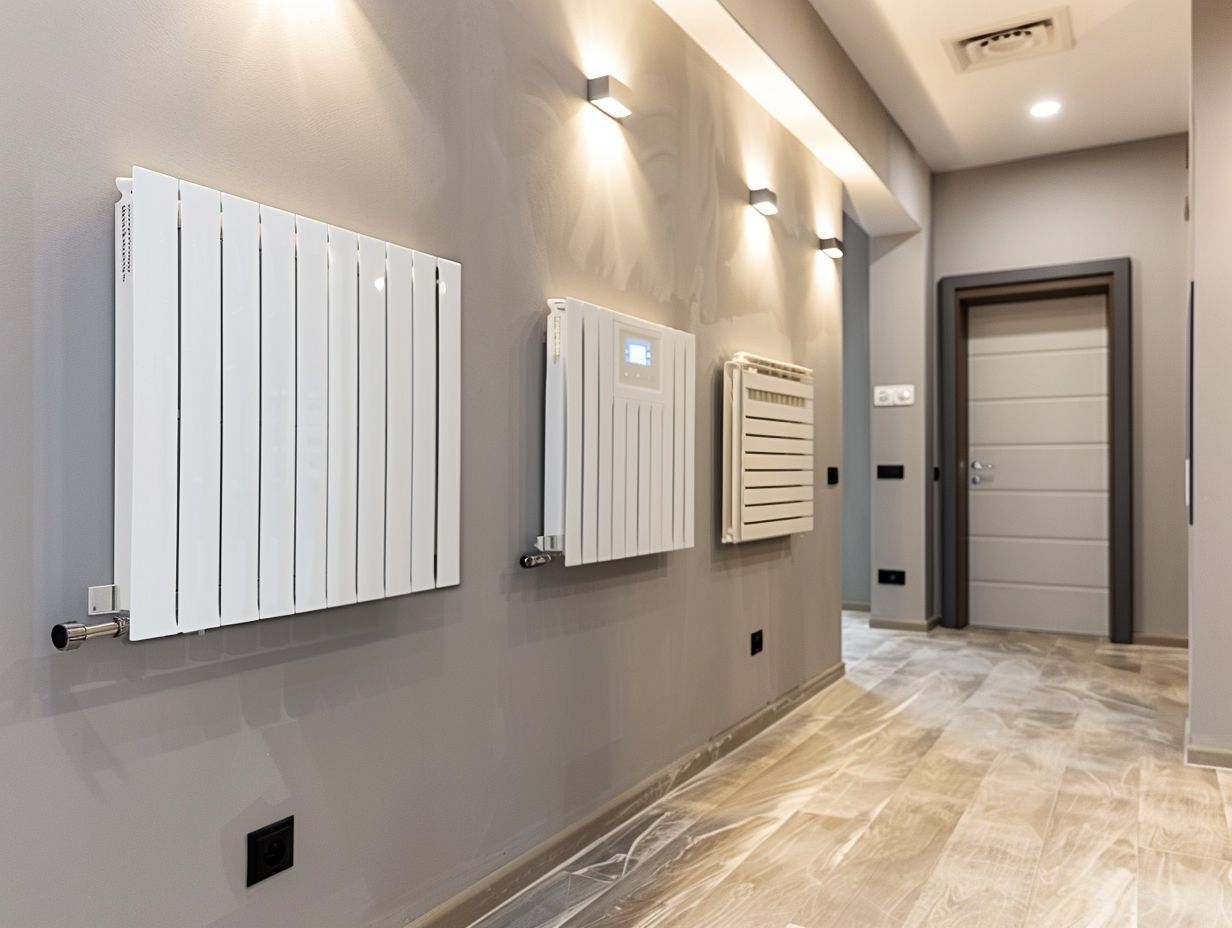If you are currently considering the choice between electric heating and horizontal heating (radiators) for your home, this article will offer an analysis of both heating methods. It will examine the advantages and disadvantages of each concerning efficiency, cost, and maintenance.
The goal is to assist you in determining which option is more appropriate for your home by contrasting these heating systems. The discussion will cover installation and maintenance factors, as well as the environmental implications of these heating methods, with a focus on sustainability and energy efficiency.
Join us as we delve into the realm of electric and horizontal heating to provide you with a comprehensive comparison of these heating options.
Key Takeaways:

- Electric heating is more energy efficient and cost-effective than horizontal heating in the long run.
- However, horizontal heating may be a better option for smaller spaces or homes with limited wall space.
- Consider your home’s specific needs and the environmental impact when choosing between electric and horizontal heating.
Overview of Electric and Horizontal Heating
The overview of electric and horizontal heating delves into the different types of radiators available for heating spaces efficiently. Horizontal and vertical radiators are popular choices when it comes to heating rooms, with each offering unique design options and heating efficiencies.
When considering electric heating systems, which often utilise baseboard heaters or wall-mounted panels, you will find they are recognised for their quick response times and precise temperature control. These systems are particularly suitable for smaller rooms or areas where consistent warmth is desired.
On the other hand, horizontal radiators are often preferred for their sleek and space-saving design, making them an excellent option for rooms with limited wall space. With varying BTU outputs, both electric and horizontal heating systems can effectively heat various room sizes while utilising convection to circulate warm air efficiently.
Pros and Cons of Electric Heating
When considering electric heating for your space, it is important to take into account several pros and cons. Electric heating systems offer quick and efficient heat output, making them ideal for heating smaller spaces or individual rooms.
Efficiency, Cost, and Maintenance
When determining the suitability of electric heating systems for your space, you must consider factors such as efficiency, cost, and maintenance. It is crucial to understand the BTU output and efficiency ratings of electric radiators to evaluate their performance and energy-saving capabilities.
Higher BTU output in electric radiators typically signifies a greater heating capacity, resulting in more efficient and effective heating. By choosing electric radiators with the appropriate BTU output for your space, you can create a comfortable environment while maximising energy usage efficiency.
It is essential to assess the cost implications of using electric radiators, encompassing both the initial investment and operational expenses, to determine the overall affordability of such systems. Implementing regular maintenance practices, such as cleaning filters and ensuring proper insulation, can improve the longevity and performance of electric heating systems.
Pros and Cons of Horizontal Heating

When selecting a heating solution for your space, it is crucial to consider the unique advantages and drawbacks that horizontal heating systems offer. Horizontal radiators are recognized for their space-saving design, which is particularly beneficial in rooms where vertical space is restricted due to furniture placement.
Efficiency, Cost, and Maintenance
When evaluating the performance of horizontal heating systems in your space, it is crucial to consider factors such as efficiency, cost, and maintenance. Horizontal radiators are specifically designed to ensure efficient heat distribution across rooms, taking into account the layout and heating requirements of the area.
One key advantage of horizontal radiators is their unique design, which allows for a more uniform distribution of heat compared to traditional vertical radiators. By strategically placing these radiators beneath windows or in specific locations, you can optimise their efficiency and achieve maximum heating output.
This strategic positioning helps mitigate heat loss from windows and walls, leading to a more consistent and comfortable room temperature. Additionally, horizontal radiators often require minimal maintenance, making them a cost-effective long-term heating solution for your space.
Comparing Heating Systems
When comparing heating systems, your decision between radiators, vertical radiators, or horizontal radiators will largely depend on your space layout and heating preferences. Each type of heating system offers distinct advantages and considerations that impact its appropriateness for various properties.
Which is Better for Your Home?
When determining the ideal heating system for your home, you need to take into account factors such as customer reviews, property value implications, and the versatility offered by vertical radiators.
It is essential to assess feedback from users and understand how vertical radiators can enhance both property aesthetics and heating performance in order to make an informed decision.
By reading through customer reviews, you can gain valuable insights into the real-world performance of different heating systems, enabling you to evaluate their efficiency and reliability effectively. Vertical radiators are notable not just for their functionality but also for the extensive range of design options they provide.
This allows you to seamlessly match them with your interior decor. The adaptability of vertical radiators in various room layouts offers you the flexibility to optimise space while ensuring effective heating distribution throughout your home.
Installation and Maintenance Considerations

When choosing vertical radiators for your heating system, it is crucial to consider installation and maintenance factors. The various styles of vertical radiators provide versatility in wall positioning and work in conjunction with central heating systems to guarantee effective heat dispersion across the area.
Costs and Requirements
When assessing the costs and requirements associated with vertical radiator designs, it is crucial for you to understand their impact on property value and heating efficiency.
Investing in high-quality vertical radiators has the potential to enhance both the aesthetics and functionality of your space, as long as they are in line with the heating system requirements and installation needs.
Selecting the appropriate vertical radiator not only contributes to the overall appearance of your home but also plays a critical role in optimising the performance of your heating system. Heating engineers are instrumental in evaluating the layout of the space and the heating demands to recommend the most suitable vertical radiator options.
By meticulously evaluating your property’s heating requirements and considering the financial implications of various vertical radiator designs, you can make an informed decision that benefits both your comfort and property value.
Collaboration between homeowners and heating engineers is essential for ensuring a seamless integration of vertical radiators with existing heating systems, ultimately guaranteeing efficient heating distribution throughout the space.
Environmental Impact of Heating Methods
When evaluating the environmental impact of heating methods, especially with regard to vertical radiators, you must take into account a variety of advantages, benefits, and drawbacks that can affect their space efficiency and heating performance. It is essential to carefully consider the pros and cons of vertical radiators in order to assess their sustainability and energy efficiency in heating spaces.
Sustainability and Energy Efficiency
To address sustainability and energy efficiency concerns in vertical radiator heating systems, you need to evaluate their performance, weight considerations, and heating efficiency. It is crucial to assess the effectiveness of vertical radiators in maintaining heating performance while minimising energy consumption to promote sustainable heating practices.
Vertical radiators, with their tall and slim design, offer a space-saving solution suitable for both residential and commercial spaces. The strategic positioning of these radiators along vertical walls enables optimal heat distribution, ensuring superior heating coverage throughout the room.
By utilising vertical radiators, you can efficiently reduce heat loss and enhance overall energy efficiency, resulting in cost savings and a reduced environmental impact. The weight specifications of vertical radiators make them convenient to install and maintain, offering a practical and sustainable heating solution.
Frequently Asked Questions

What is the main difference between electric heating and horizontal heating (radiators)?
Electric heating uses electricity to generate heat, while horizontal heating, also known as central heating, uses a boiler to heat water that is then circulated through radiators.
Which type of heating is more energy-efficient?
Electric heating is generally considered more energy-efficient because it does not lose heat through water circulation like horizontal heating. However, the efficiency may vary based on insulation and usage habits.
Are electric heating and horizontal heating (radiators) both suitable for large spaces?
Yes, both types of heating can be used in large spaces. However, electric heating may be more suitable for particularly large spaces as multiple units can be installed without the need for complex ductwork.
Is one type of heating more cost-effective than the other?
It depends on various factors such as the cost of electricity and gas in your area, the size of the space being heated, and the efficiency of the system. It is best to consult with a professional to determine the most cost-effective option for your specific situation.
Can electric heating and horizontal heating (radiators) be used together?
Yes, it is possible to have both types of heating systems in one space. However, it is important to ensure that they are properly installed and controlled to avoid energy waste and potential safety hazards.
Which type of heating is easier to install?
Electric heating is generally easier to install as it does not require a complex network of ducts and pipes like horizontal heating. However, both types of heating systems should be installed by professionals for optimal safety and efficiency.

